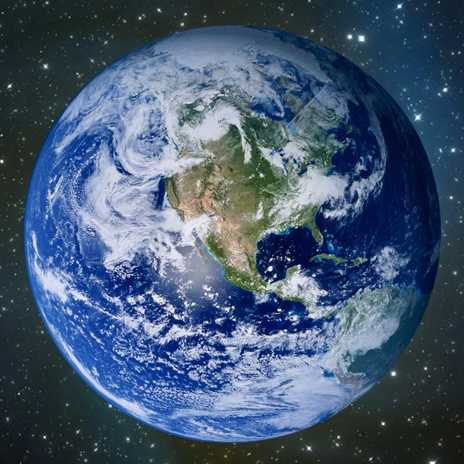EDIT: Submarine power transportation is indeed on the list
Not transoceanic, but there are two projects currently proposed that will – when constructed – break the current record for the “longest undersea power transmission cable” (a record currently held by the North Sea Link at 720 km, or 450 miles.)
One of these projects is the Xlinks Morocco-UK Power Project which aims to lay 3,800 km (2,400 miles) of cable and sell Morocco’s solar power to England.
There is, as of yet, not enough cable in the world to even begin this project. The company proposing the project is building factories to produce this cable.
The other is the Australia-Asia Power Link, which aims to provide Australian solar power to Singapore using a 4,500 km (2,800 miles) undersea cable.
Where the Xlinks project ran into a “not enough cable in the world” problem, Sun Cable’s AAPL has apparently been running into a “not enough money in the world” problem, as it has repeatedly gotten into trouble with its investors.
EDIT: But also, storage is scaling up
@[email protected] provided a fantastic link to a lot of energy storage mediums that are already in use in various grids across the world. These include (and the link the professor provided gives an excellent short summary on each)
- Pumped hydroelectric
- Compressed Air Energy Storage (CAES)
- Flywheels
- Supercapacitors
- And just plain batteries
Also, this wasn’t in the Gumby’s answer, but Finland’s Vatajankoski power plant uses a hot sand battery during its high-demand, low-production hours.
Hydrogen is projected to grow
@[email protected] noted that hydrogen has advantages no other energy storage medium possesses: duration of storage and ease of piping/shipping. This is probably why numerous governments are investing in hydrogen production, and why Wood Mackenzie projects what looks like a 200-fold increase in production by the year 2050. (It’s a graph. I’m looking at a graph, so I am only estimating.)
Well the best solution is probably nuclear meeting the base load while solar helps with daytime peaks.
But otherwise pumped storage has promise. Have 2 reservoirs at different elevations connected by a turbine and pumps. When there is excess power durning the day, pump water to the upper reservoir. At night, let the water flow by gravity to the lower reservoir through a turbine and make power.
Transoceanic power transmission is just too expensive.
deleted by creator
I doubt Singapore could meet its energy needs from solar even if every square centimeter was covered in solar panels.
But the point is, the pumped storage could be elsewhere in SE Asia rather than trying to transfer power from the other side of the planet.
Look, so solution is perfect. It is stupid to say “well that whole idea should be thrown out because it won’t work here.” That’s no different from anti-solar people saying we shouldn’t have solar because of clouds.
deleted by creator
The only way I can make sense of Lurker’s comment is:
maybe Lurker didn’t realize my edits to the post came after some people’s comments (my edits definitely came after your comment, derf). Lurker may have assumed you were dismissing the practicality of the Asia-Australia Power Link, mentioned in my edit but not in the original post.
Assuming the above, this is a miscommunication.
Assuming anything else, Lurker’s comment doesn’t make that much sense.
deleted by creator
Ahhh… okay, yeah. That also makes sense.
I know very little about this technology, so is there a theoretical maximum height to these water pump systems being used here? Could they not just build skyscraper sized towers of water?
deleted by creator
folks are used to battery tech being so important from cars due to energy density and weight being so important. But stationary energy storage can be simple. hydro-electric dams use water flowing downhill to generate electricity, and use excess electricity to pump water uphill. You can have a simple motor lifting a weight with a pulley as energy storage.
It’s never needed new technology to solve, it’s been intentionally held back so rich people can continue making money off all that oil extraction equipment and land leases they bought.
Probably not. Energy storage is probably the better idea. Check out this link and scroll down to this sections on types of grid energy storage. https://science.howstuffworks.com/environmental/green-tech/sustainable/grid-energy-storage.htm
Oh thanks for the link! This is a good one. According to the article we’re already using:
- Pumped hydroelectric
- Compressed Air Energy Storage (CAES)
- Flywheels
- Supercapacitors
- And just plain batteries
And the article ends with,
“The price of storage is coming down. The price of solving the problems in other ways is going up. Pretty soon, these prices are going to cross,” notes Boyes, suggesting cost could spur the addition of storage to the grid.
Are those storage measures being used at scale? IIRC there’s large-scale battery storage in Australia, but I don’t know what is being done elsewhere.
I believe the article is arguing that we need to scale them up. Although: it mentions that the Tennessee Valley Authority already uses pumped hydroelectric storage at the foot of Raccoon Mountain (side-note, I know nothing about Tennessee, but somehow naming a mountain “Raccoon Mountain” confirms all of my stereotypes about the state), to supplement its grid during low-production hours.
🦝🦝🦝
The distance is simply too great, based on what I could find you can only transmit power for about 300 miles without it getting too costly. Sometimes it goes up to 450 miles and some islands do get power remotely.
But the distance of the Atlantic is around 3310 miles coast to coast if you want to transfer power between the US and Europe… so that’s out of the question. It’s much more economic to use solar during the day and use batteries (any sort, for example in Austria we pump water up the mountain in some places) for the night.
deleted by creator
I demand the creation of a Kocomo.
Yeah, the 450 mile one – the North Sea Link – is the “longest subsea interconnector in the world.”
I think over land, you can manage longer distances (China’s transmission projects go thousands of miles), but even those aren’t going the full 3310 miles it would take to cross the Atlantic.
Used EV batteries as power packs tied to the grid. Some neighborhoods are already getting these. They also work well as backup power when the grid goes down.
I think grid level or neighborhood level backup power is a great way to shore up the power supply without putting in bigger wires. Keep them topped up with off-peak grid power or local solar, and draw on them to offset the peaks as well as fill in for peer outages (assuming proper disconnect is installed for safety of the workers fixing power lines etc).
Okay any engineers up for a hypothetical? As others have pointed out, things like wind, nuclear, and other things are sensible answers. BUT WHAT ABOUT AN INSANE ANSWER?
It obviously would be prohibitive to have a colossal “city battery” that stored excess from the day to be used at night, and environmentally would present issues making a city sized battery. But what about a non-traditional kinetic battery (think F1’s KERS). What if there was say a building in the middle of the city, and inside is a metal disk made of solid steel that’s a foot thick, and 500 feet across, on an electromagnetic cushion, housed in a room with negative pressure or a vacuum. During the day, the excess solar energy from the city powers this to gradually spin faster and faster, and during the night this process is reversed with the enormous amount of kinetic energy feeding a powerstation generator that would provide power at night. Okay, I told you it was an insane hypothetical, but as thought experiment humour me. It would by definition be a battery, but one that wouldn’t deteroriate in the same was as a chemical battery, without the same environmental impact of involving all the cobalt, lithium, etc., although it admittedly would be pretty wildly expensive just from a space, and material cost of the disk perspective. How big would this need to be? Is this remotely possible? I mean WAY less power is used at night after all. Thoughts?
In case you don’t already know, that concept has a name: Fly Wheels (wiki link: https://en.wikipedia.org/wiki/Flywheel ).
One of their main problems is that, as you pump enough energy into them to justify their cost compared to other storage mechanisms, the spinning mass becomes more and more of a danger if it ever breaks loose. Not to mention the gyroscopic effect making a “fully charged” fly wheel very hard to safely move.
The statistic you’re looking for is energy density. It’s usually expressed as Watthour per kilo(Wh/kg). Li-ion batteries are somewhere around 300Wh/kg, or about 1 megajoule though less if you’re making it into a building.
Lifting a big weight provides you with Mass x 9.81 x Height amount of joules. So lifting 1 kg for 100m gives you 1x10x100~ 1 kilojoule.
So, to charge my 300kg, 32.000 Wh Nissan leaf battery (130Wh/kg, what you get when you actually build batteries in the real world), you would need to lift a mass of 115tons to 100 meters. So to charge a single car, at 100% efficiency, you need to lift 72 entire cars. Just so I can drive to work and back. And real-world efficiency is far below 100%, just think of the friction.
I think you’ve spotted the reason why we don’t actually build gravity batteries. Imagine lifting 115 tons to 100m, that requires a massive crane, itself weighting nearly half that. That’s why all gravity storage in existence basically consists of pumping water uphill, onto pre-existing mountains and lakes that nobody had to fabricate out of concrete and steel.
There’s a company in the UK that proposes building gravity batteries using existing shafts that were excavated for mining.
I like insane hypotheticals that are discussed as hypocriticals. Not an engineer on paper, but these are my thoughts.
I think a very heavy weight that fits neatly inside of a protective structure with room to raise and lower it would be the way to get a kinetic battery. I’m talking about a platform stacked with concrete and rocks and sand and building demolition debris until it has stacked up to 2 or 3 stories tall. Then build a basic shell around it to blend into the town and have that 6 to 8 stories tall. The weight would tug at cables or press down on a hydraulic cylinder at a constant rate. A motor would then spin a large set of extreme reduction gears to raise the weight when there’s extra power coming in. Then, the tremendous weight could drive the reduction gears to spin the motor as a generator at a constant rate and make reliable power.
The less crazy version of this has been proposed, a set of cranes stacking up and lowering down more reasonably size blocks to store power inside of a tall structure.
None of this is practical. You can’t build a tower like this for any real storage, it’s just not efficient. The only effective method is running a train up a mountain, or pumping water uphill. If you have to actually build a mountain a first, it’s not going to work.
Obviously you would need plenty of extra solar power for this but Hydroelectric dams are giant batteries when run in reverse. Charge them up with extra solar power and then use the energy at night
Required vigorous energy reduction plans for industrial sites.
So we heavily incentivize industrial sites to shift operation to hours during which power production exceeds demand?
They likely have reasons for the existing operating hours so it might work better to have them provision their own energy storage to cover the usage
Production based billing over a base kwh so it doesn’t affect normal households.
They should have mandatory energy reduction plans regardless. They waste a lot of energy.
One thing for long range electric hauling is high voltage DC lines, or so I learned when I worked for EDF/RTE
400.000+ volt DC.
I do not know the theory behind it though, and IIRC its for Europe and land.
HVDC is also used to connect the North Island of New Zealand to the South Island, since much power generation occurs in the South island but more consumption happens in the North.
Source: am kiwi, also https://en.m.wikipedia.org/wiki/HVDC_Inter-Island
Australia too, according to a video I found.
There will likely be lots of wind energy too which could alleviate the solar problem, though this is based on luck. Passed that the ideal solution is nuclear energy and in the future fission based reactors if they are economically viable.
What’s most feasible today in most places would be burning gas. I know it’s not perfect and still emits plenty of CO2 but the plants are much faster, cheaper and easier to build than nuclear, and gas burns much cleaner than coal or oil. Plus it can be stored and transported fairly efficiently by LNG container ships.
Wait! Never mind. I should have done a simple web search before posting this question.
I found a video on it.
England already has two oversea electric cables that connect it to France on the one side and Scandinavia on the other. They have more than paid for themselves already, indicating that this a solution already being implemented in parts of the world… At least for short distances.
Yeah, it’s best to do some searches before asking here. In my experience, Lemmy isn’t nearly as strict on that as the other website.
That said, R.J. Gumby was able to give a fantastic link about the storage technology currently in use.
I’m glad you’re getting good results! It is interesting to see someone learning in real time through edits and comments. Yay internet!
Hydrogen is pretty much the only one that really works. It allows you to store energy for months on end, or ship/pipe it around for thousands of miles.
Which is, I’m assuming, the reason that hydrogen use and production are expected to vastly increase in the next 30 years.
Massive fusion reactions on Luna to turn her into a second sun. Twice the solar power, and less tides!









